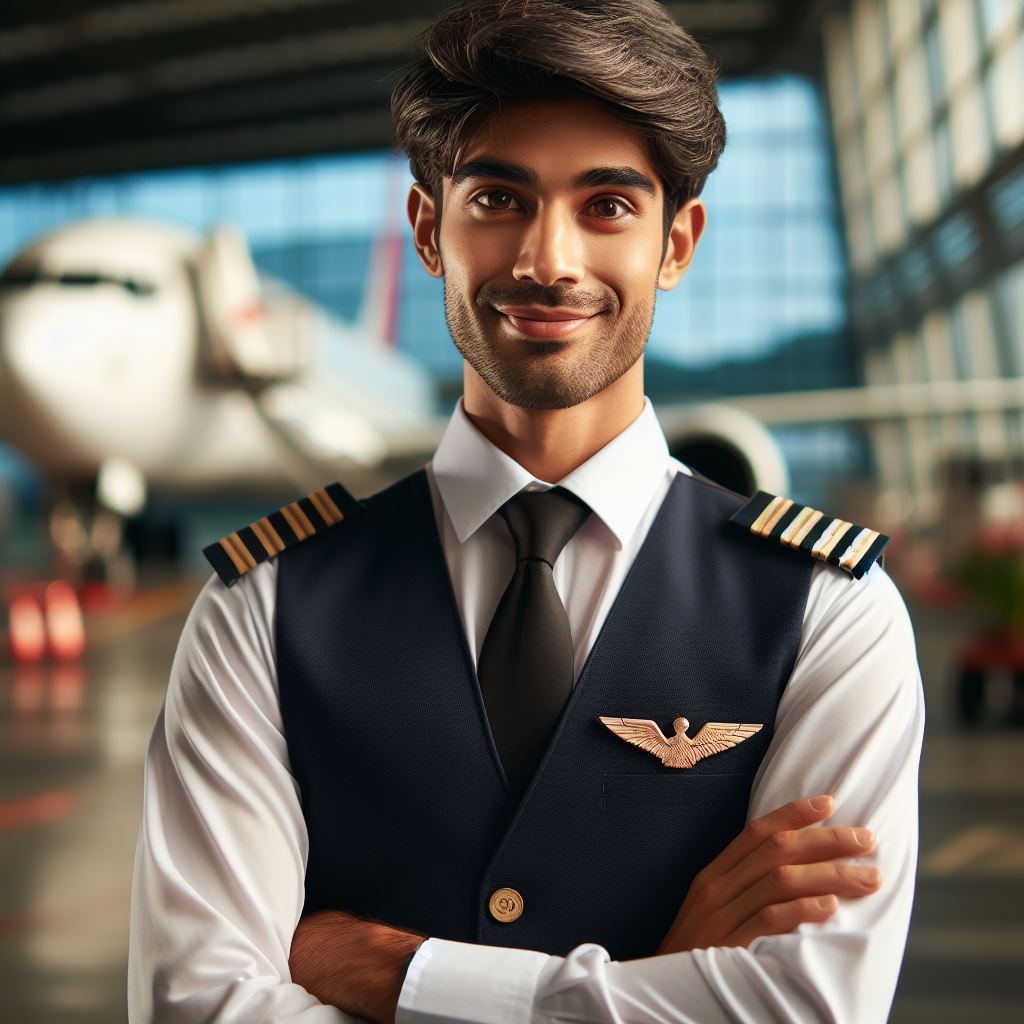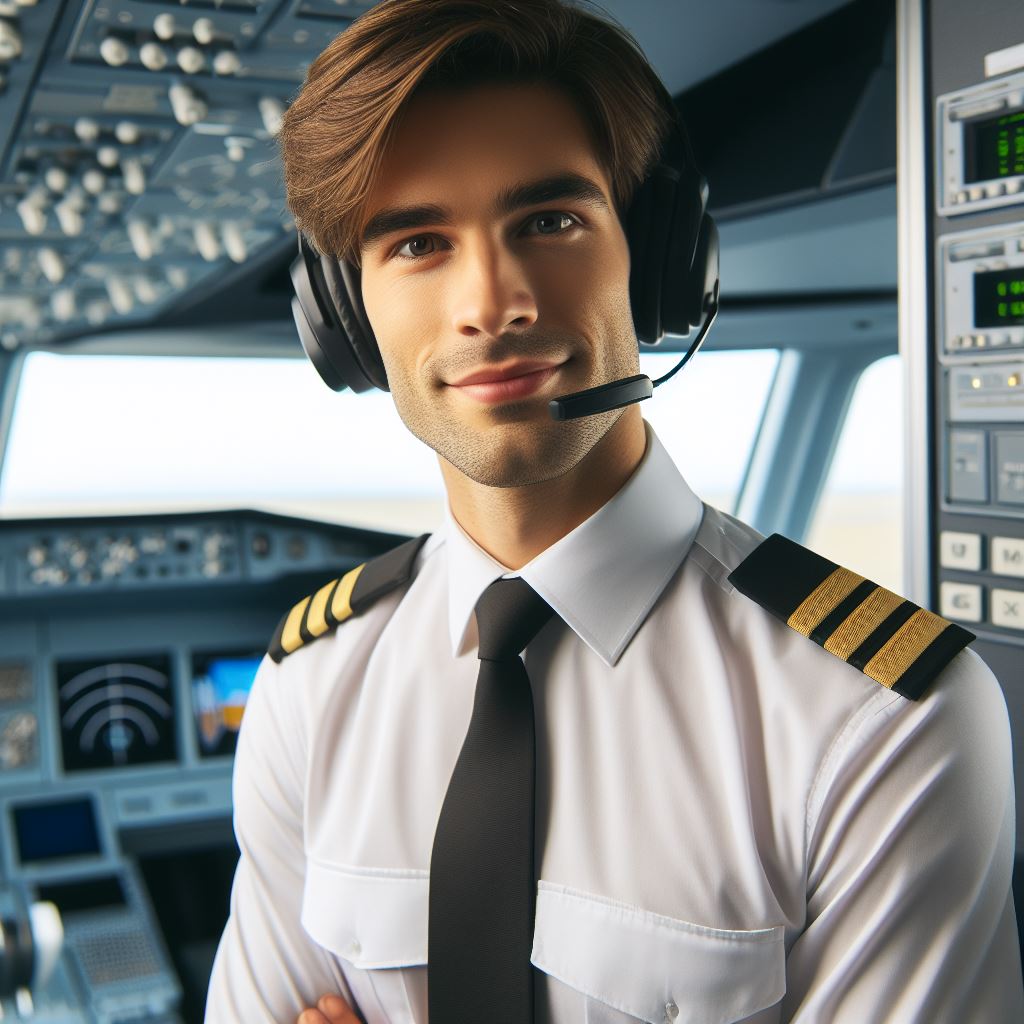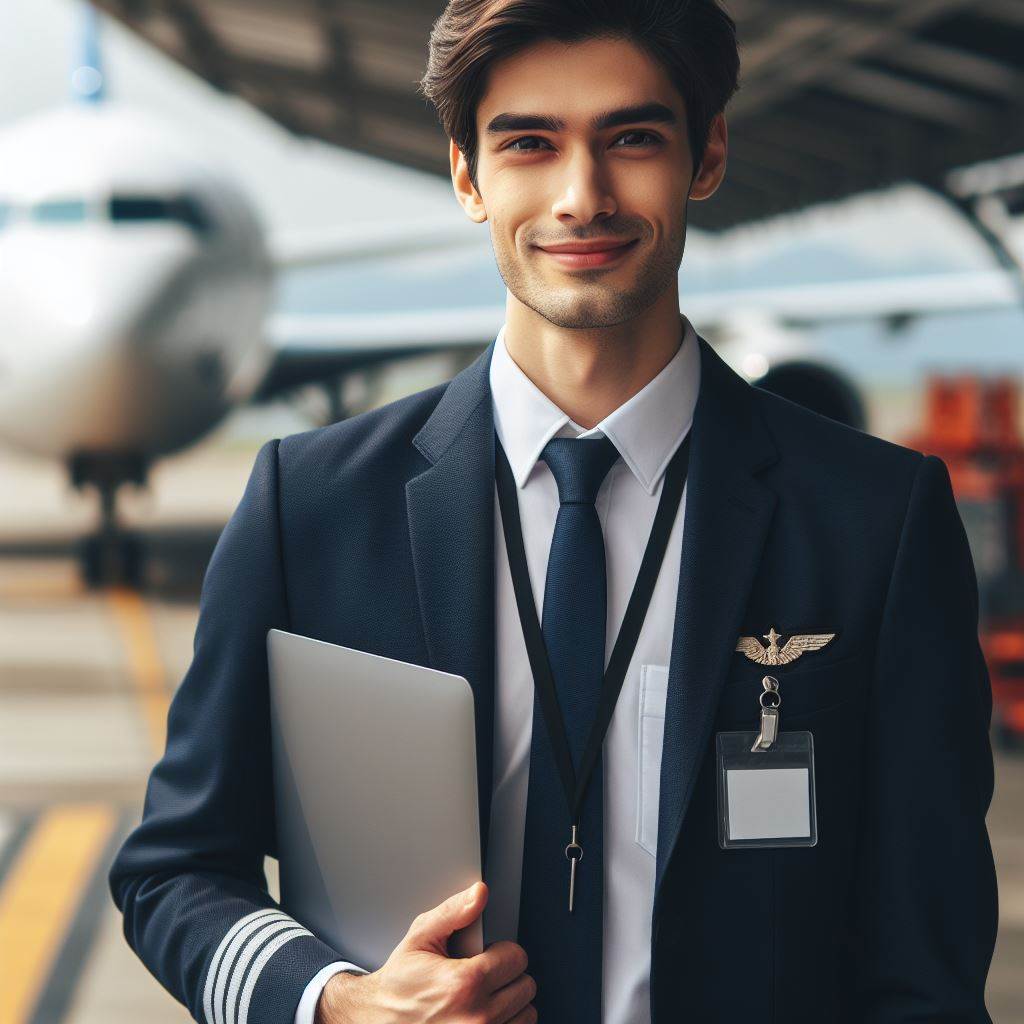Introduction
In New Zealand, pilot licenses are crucial for aspiring aviators, ensuring safety and regulatory compliance.
This blog post aims to provide a comprehensive guide on navigating NZ pilot licenses.
A. Importance of Pilot Licenses in New Zealand
- Ensures competency: Pilot licenses indicate a pilot’s skill and knowledge, crucial for safe flying.
- Legal requirement: It’s mandatory to hold a valid pilot license to operate aircraft in New Zealand.
- Safety assurance: Licenses ensure pilots understand and adhere to aviation rules, enhancing overall safety.
B. Aim of the Blog Post
- Provide clarity: To simplify the complex process of obtaining and maintaining pilot licenses.
- Offer guidance: To assist individuals in understanding the various types of pilot licenses available.
- Highlight resources: To direct aspiring pilots to the right information and training facilities in New Zealand.
Basically, this blog post is designed to be a helpful resource for anyone interested in pursuing a pilot license in New Zealand, offering essential information and guidance.
Overview of Pilot Licenses in New Zealand
A. Different types of pilot licenses available
1. Student Pilot License (SPL)
- SPL serves as the initial step into the world of aviation.
- It allows individuals to begin their flight training under the guidance of certified flight instructors.
- While holding an SPL, students learn the fundamentals of flying and gain essential skills necessary for progression.
2. Recreational Pilot License (RPL)
- RPL is designed for those who wish to fly for recreational purposes.
- It permits holders to engage in non-commercial flying activities such as leisure flights and aerial sightseeing.
- With an RPL, pilots can fly solo and enjoy the freedom of flight within certain limitations and airspace restrictions.
3. Private Pilot License (PPL)
- PPL is the next level of certification beyond RPL, offering more privileges and opportunities.
- Holders of a PPL can fly aircraft for personal use, including travel and transportation, with friends and family.
- This license allows pilots to gain experience in various flying conditions and expand their horizons within the realm of general aviation.
4. Commercial Pilot License (CPL)
- CPL is geared towards individuals seeking a career in aviation.
- It enables pilots to fly aircraft for commercial purposes, such as aerial photography, crop dusting, and charter flights.
- CPL holders undergo specialized training and accumulate significant flight experience to meet the demands of commercial aviation.
5. Airline Transport Pilot License (ATPL)
- ATPL represents the pinnacle of pilot certification, reserved for those aspiring to become airline captains.
- Holders of an ATPL are qualified to operate as pilots-in-command on large commercial aircraft.
- Achieving an ATPL requires extensive training, experience, and proficiency in areas such as navigation, aircraft systems, and crew resource management.
B. Eligibility criteria for each license
- SPL, RPL, PPL, CPL, and ATPL have specific eligibility requirements concerning age, medical fitness, and educational background.
- Applicants must undergo thorough medical examinations to ensure they meet the physical and mental standards necessary for safe flying.
- Additionally, each license may have prerequisites in terms of flight training hours and passing written and practical examinations.
C. Scope of activities permitted for each license
- The scope of activities permitted varies according to the type of license held.
- SPL allows for supervised training flights under instructor guidance.
- RPL permits solo flying and non-commercial activities.
- PPL enables pilots to fly for personal use, including carrying passengers.
- CPL authorizes pilots to engage in commercial flying operations.
- ATPL qualifies pilots to command commercial airliners and assume high-level responsibilities within the airline industry.
Read: Day in the Life: A Kiwi Pilot’s Routine
Requirements and Process for Obtaining a Pilot License
Obtaining a pilot license is an exciting endeavor that requires careful planning and dedication.
To help aspiring pilots navigate through the process, we have compiled a comprehensive guide on the requirements and steps involved.
A. Age and medical requirements
The first step towards becoming a licensed pilot is to fulfill the age and medical requirements.
Generally, the minimum age to apply for a private pilot license is 17 years, while for a commercial pilot license, it is 18 years.
Additionally, applicants must pass a thorough medical examination conducted by a designated aviation medical examiner.
B. Educational requirements and training options
While there are no specific educational requirements to obtain a pilot license, possessing a high school diploma or an equivalent qualification is generally preferred.
Aspiring pilots can choose from various training options, including flight schools, aviation academies, or university programs, to gain the necessary knowledge and skills.
C. Flight experience requirements
To qualify for a pilot license, candidates must accumulate a certain amount of flight experience.
The requirements may vary depending on the type of license sought.
For example, a private pilot license typically requires a minimum of 40 hours of flight time, including specific hours of cross-country and solo flights.
D. Written and practical exams
As part of the licensing process, aspiring pilots must pass both written and practical exams.
Personalized Career Consulting
Unlock your potential with expert career advice tailored to your goals. Get personalized guidance and actionable steps toward your dream career in New Zealand.
Get StartedThe written exam covers various subjects such as aviation regulations, meteorology, navigation, and aircraft systems.
The practical exam, also known as a checkride, is conducted by a certified examiner and evaluates the candidate’s flying skills and knowledge in a real aircraft.
E. Licensing authority and application process
In New Zealand, the Civil Aviation Authority (CAA) is responsible for issuing pilot licenses.
To initiate the application process, candidates need to complete the necessary forms, provide required documents, and pay the prescribed fees.
The CAA will then review the application and conduct a background check before granting the license.
Having outlined the key requirements and steps, it is important to consider additional factors that can impact the licensing process.
These include the cost of training, which can vary significantly depending on the chosen flight school or training program.
Additionally, maintaining a good level of physical fitness and mental alertness is crucial for a career in aviation.
In fact, obtaining a pilot license in New Zealand requires meeting certain age, medical, educational, and flight experience requirements.
The process involves successfully completing written and practical exams, followed by the submission of an application to the Civil Aviation Authority.
By diligently following these steps and selecting a reputable training program, aspiring pilots can turn their dreams of flying into a reality.
Read: NZ Airline Pilot Paths: Your Complete Guide
Student Pilot License (SPL)
A. Purpose and benefits of obtaining an SPL
The Student Pilot License (SPL) stands as the initial step into the exhilarating world of aviation.
It serves as a vital introduction, allowing enthusiasts to grasp the fundamentals of flying aircraft.
Transform Your Career with a Professional CV and Cover Letter
Stand out to employers with an ATS-optimized resume and tailored cover letter designed to match your dream role. Let us craft your job application materials for success!
Get StartedBy obtaining an SPL, individuals gain invaluable hands-on experience under the guidance of seasoned flight instructors.
One of the primary benefits of acquiring an SPL is the opportunity it provides to delve into practical flight training.
This license enables aspiring pilots to familiarize themselves with aircraft controls, navigation systems, and aviation protocols.
Such firsthand exposure lays a robust foundation for future pursuits in aviation, setting the stage for more advanced licenses.
B. Eligibility criteria for SPL
Eligibility for an SPL necessitates meeting specific criteria outlined by aviation authorities.
Prospective SPL holders typically need to be at least 16 years old.
Additionally, individuals must undergo a basic medical examination to ensure they meet the physical requirements necessary for piloting aircraft.
This examination aims to identify any medical conditions that could potentially hinder safe flight operations.
C. Duration and limitations of an SPL
The validity of an SPL persists until the pilot attains a higher-level license, such as a Private Pilot License (PPL).
During this period, SPL holders are permitted to fly solo or with an authorized flight instructor.
However, there are restrictions on the types of aircraft that SPL holders can operate, typically limited to smaller, single-engine airplanes.
Despite these limitations, SPL holders have the opportunity to gain valuable flying experience.
Each flight undertaken contributes to the accumulation of flight hours, an essential requirement for advancing to more advanced licenses.
Furthermore, SPL holders can practice various maneuvers, such as takeoffs, landings, and navigation exercises, under the supervision of experienced instructors.
Boost Your Career with a Standout LinkedIn Profile
Attract recruiters and expand your network with a fully optimized LinkedIn profile tailored to highlight your strengths and professional goals. Let your profile open doors to new opportunities!
Get OptimizedD. Required endorsements and training opportunities
In addition to meeting the basic requirements for an SPL, individuals may need to obtain specific endorsements for certain types of aircraft or flight conditions.
These endorsements validate the pilot’s proficiency in handling specialized aircraft or performing particular maneuvers.
Numerous training opportunities are available to SPL holders through flight schools, aeroclubs, and aviation academies.
These institutions offer comprehensive training programs tailored to the needs of aspiring pilots.
From classroom instruction to hands-on flight training, SPL holders have access to a wide range of resources to enhance their aviation skills and knowledge.
Overall, the Student Pilot License serves as a pivotal starting point for individuals embarking on their aviation journey.
By embracing the opportunities presented by an SPL, aspiring pilots can lay the groundwork for a fulfilling and rewarding career in aviation.
Read: Supply Chain Education & Training in NZ

Recreational Pilot License (RPL)
A. Purpose and Benefits of Obtaining an RPL
An RPL allows pilots to fly aircraft for recreational purposes and personal enjoyment.
It is the first step towards becoming a licensed pilot and opens doors to further endorsements.
RPL holders can share the joy of flying with family and friends by taking them on flights.
B. Eligibility Criteria for RPL
Applicants must be at least 16 years old and have a Class 2 medical certificate.
They should have completed at least 20 hours of flight time, including 10 hours of pilot-in-command time.
A pass in the RPL theory exam and practical flight test is required.
C. Duration and Limitations of an RPL
The RPL has no expiration date and remains valid as long as the pilot maintains their medical certificate.
RPL holders can only fly during daylight hours and within 25 nautical miles of their departure aerodrome.
They cannot carry more than one passenger, and flying for hire or reward is prohibited.
D. Required Endorsements and Training Opportunities
To fly different types of aircraft, additional type endorsements are necessary.
Training opportunities include gaining experience through flight reviews, club activities, and attending aviation seminars.
RPL holders can work towards obtaining a Private Pilot License (PPL) or other advanced licenses.
Obtaining an RPL is an exciting journey for aviation enthusiasts.
It allows them to experience the thrill of flying while acquiring essential skills and knowledge.
With an RPL, pilots can enjoy recreational flight activities and explore further opportunities in the aviation industry.
Read: Career Path: Supply Chain Mgr in NZ
Private Pilot License (PPL)
A Private Pilot License (PPL) in New Zealand is an essential certification for individuals seeking to explore the thrilling world of aviation.
A. Purpose and Benefits of Obtaining a PPL
Obtaining a PPL grants pilots the freedom to fly for non-commercial purposes, granting them unparalleled independence in the skies.
Paired with the sheer joy of flight, a PPL opens doors to a world of adventure.
B. Eligibility Criteria for PPL
To be eligible for a PPL, individuals must be a minimum of 17 years old, possess a Class 2 medical certificate, and have an acceptable level of English language proficiency.
Additionally, a good understanding of aviation theory is required.
C. Duration and Limitations of a PPL
The duration of a PPL training course can vary based on individual progress and commitment.
However, the average time to obtain a PPL in New Zealand is approximately 6 to 12 months.
Once achieved, a PPL has certain limitations, including restrictions on flying for hire or reward.
D. Required Endorsements and Training Opportunities
Apart from the basic PPL, pilots can pursue additional endorsements to enhance their skills and expand their flight opportunities.
Some popular endorsements include night flying, instrument flight rules (IFR) rating, and multi-engine aircraft rating.
These endorsements enable pilots to fly in specific conditions and operate different types of aircraft.
Training opportunities for PPL holders are abundant in New Zealand.
Various flight schools across the country offer comprehensive training programs, ensuring aspiring pilots gain the necessary knowledge and hands-on experience.
Flight schools provide both theoretical classes and practical flight training, guided by experienced flight instructors.
E. Why choose to obtain a PPL in New Zealand?
New Zealand offers an idyllic environment for flight training.
Its diverse landscapes, from stunning coastlines to breathtaking mountains, provide an incredible backdrop for pilots to hone their skills.
Additionally, the country’s well-established aviation industry ensures high-quality training standards and numerous job opportunities.
F. Financial Considerations
While obtaining a PPL is undoubtedly an investment, the cost can vary depending on factors such as flight hours, training facilities, and instructor fees.
Aspiring pilots should carefully consider their budget and explore potential funding options, including scholarships and loans, to pursue their dream of flying.
G. Safety and Responsibility
With the privilege of obtaining a PPL comes great responsibility.
Pilots must always prioritize safety and adhere to the aviation regulations and procedures set forth by the Civil Aviation Authority of New Zealand.
Diligent pre-flight planning, continuous training, and regular medical assessments are vital to maintain safety in the skies.
Obtaining a Private Pilot License in New Zealand opens up a world of possibilities.
The benefits, training opportunities, and the country’s picturesque landscapes make it an ideal destination for aspiring pilots.
With dedication, passion, and the right training, anyone can navigate the path to become a licensed pilot in New Zealand.
Commercial Pilot License (CPL)
A Commercial Pilot License (CPL) is a qualification that permits the holder to fly for compensation or hire.
It is the next step for individuals pursuing a career in aviation after obtaining a Private Pilot License (PPL).
A. Purpose and Benefits of Obtaining a CPL
- With a CPL, pilots can earn a salary by flying for airlines, corporations, or private charter companies.
- CPL holders have the opportunity to build flight hours and gain valuable experience.
- This license provides individuals with advanced training and knowledge required for commercial aviation.
B. Eligibility Criteria for CPL
- Minimum age requirement is 18 years.
- Medical fitness is necessary, as candidates must hold a Class 1 medical certificate.
- Applicants must have a valid Private Pilot License (PPL) and meet the flight experience criteria.
- Successful completion of theoretical knowledge exams is mandatory.
C. Duration and Limitations of CPL
The duration of CPL training depends on various factors, including the individual’s availability, training program, and dedication.
On average, it takes around 6 to 12 months to obtain a CPL. However, CPL comes with certain limitations.
Holders of a CPL cannot undertake flights for commercial purposes without the necessary aircraft type rating and additional endorsements.
D. Required Endorsements and Training Opportunities
In addition to the CPL itself, pilots are required to obtain various endorsements for specific operations.
These endorsements may include multi-engine and instrument ratings.
Training opportunities for CPL holders are abundant.
Many flight schools and aviation organizations offer advanced training programs to enhance skills and knowledge.
In essence, obtaining a Commercial Pilot License (CPL) opens up a world of opportunities in the aviation industry.
It allows individuals to pursue a career as a professional pilot, earn a salary, and gain invaluable experience.
However, eligibility criteria, limitations, and additional endorsements must be considered during the CPL journey.
With the right training and dedication, aspiring pilots can navigate their way toward a successful career as commercial pilots.
Airline Transport Pilot License (ATPL)
Obtaining an Airline Transport Pilot License (ATPL) is vital for those aspiring to become professional pilots.
This license signifies the highest level of piloting expertise and opens up numerous career opportunities in the aviation industry.
A. Purpose and Benefits of Obtaining an ATPL
Achieving an ATPL allows pilots to act as the pilot-in-command of an aircraft operating under various air transport operations.
ATPL holders gain the privilege of flying large commercial airplanes, enjoying higher salaries and better job prospects.
This license is essential for individuals aiming to pursue a career as a commercial airline pilot.
Having an ATPL demonstrates exceptional skills, professionalism, and proficiency in flying.
B. Eligibility Criteria for ATPL
- Applicants must be at least 21 years old to apply for an ATPL.
- A minimum flight experience of 1,500 hours is required, which includes specific requirements for cross-country flights and night flying.
- Pilots must hold a valid Private Pilot License (PPL) and Commercial Pilot License (CPL) before beginning their ATPL training.
- Medical fitness, as determined by rigorous medical examinations, is an essential requirement.
C. Duration and Limitations of an ATPL
The time required to obtain an ATPL may vary based on the individual’s dedication and training program.
Generally, the process can take approximately two to three years to complete.
An ATPL allows pilots to fly large multi-crew aircraft with passengers and cargo, both domestically and internationally.
However, there may be certain aircraft type ratings or endorsements necessary for specific aircraft models.
D. Required Endorsements and Training Opportunities
Pilots pursuing an ATPL are required to complete additional training and obtain specific endorsements.
Multi-engine and instrument rating endorsements are essential for ATPL holders, ensuring competence in operating complex aircraft.
The training for an ATPL primarily focuses on advanced aircraft systems, flight management, crew resource management, and high-altitude operations.
Training opportunities for ATPL holders include simulator sessions, aircraft-specific courses, and recurrent training to maintain proficiency.
In a nutshell, obtaining an Airline Transport Pilot License is a significant milestone for aspiring pilots.
It provides numerous benefits, including career advancement and the ability to operate large commercial aircraft.
Adhering to the eligibility requirements, completing the necessary training, and obtaining endorsements are essential steps towards achieving an ATPL.
With dedication and hard work, pilots can navigate their way to a successful aviation career.
Conclusion
Navigating pilot licenses in New Zealand can be a complex process, but it is essential for aspiring pilots to understand the requirements and procedures.
Throughout this primer, we have discussed the different types of pilot licenses available in New Zealand, including private, commercial, and airline transport licenses.
By understanding these licenses, aspiring pilots can properly plan and prepare for their training and career goals in the aviation industry.
It is important to note the significance of meeting the necessary qualifications, including flight hours, medical examinations, and theoretical knowledge examinations.
While the process of obtaining a pilot license may seem daunting, it should not deter individuals from pursuing their dreams of flying in New Zealand.
In closing, we encourage all aspiring pilots to pursue their passion and take the necessary steps to become licensed pilots in this beautiful country.
The aviation industry in New Zealand offers numerous opportunities for growth and development, and with determination and perseverance, aspiring pilots can achieve their goals of soaring through the skies.
So, if you have always dreamt of becoming a pilot in New Zealand, don’t let anything hold you back! Start your journey today and make your dreams come true!




